Cerceris insolita is a species of weevil wasp found in eastern North America, from Canada to Florida and west to Texas. Females hunt weevils and other beetles to feed their developing larvae.
Kingdom: Animalia
Phylum: Arthropoda
Class: Insecta
Order: Hymenoptera
Family: Crabronidae
Genus: Cerceris
Species: Cerceris insolita

Weevils wasps can generally be identified by their tergum that are constricted at the margins giving a 'lumpy' impression or bumps on the abdomen. This species is black with yellow markings on the face and throughout the body. They are generally around 1cm or less in length.
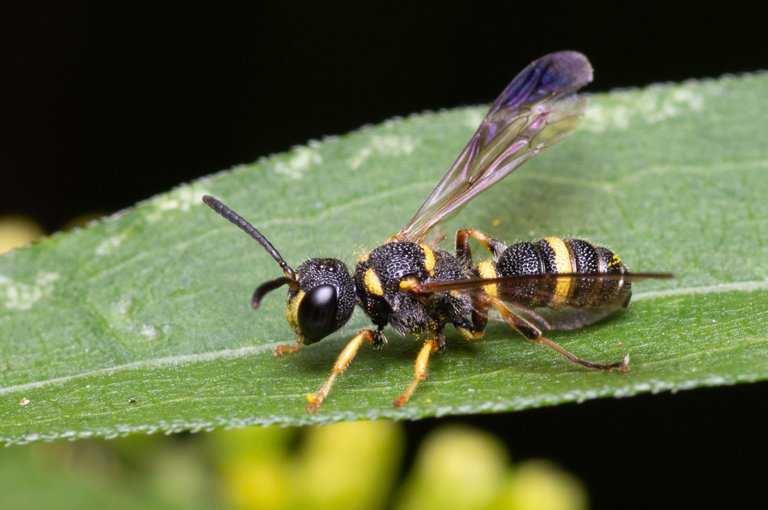
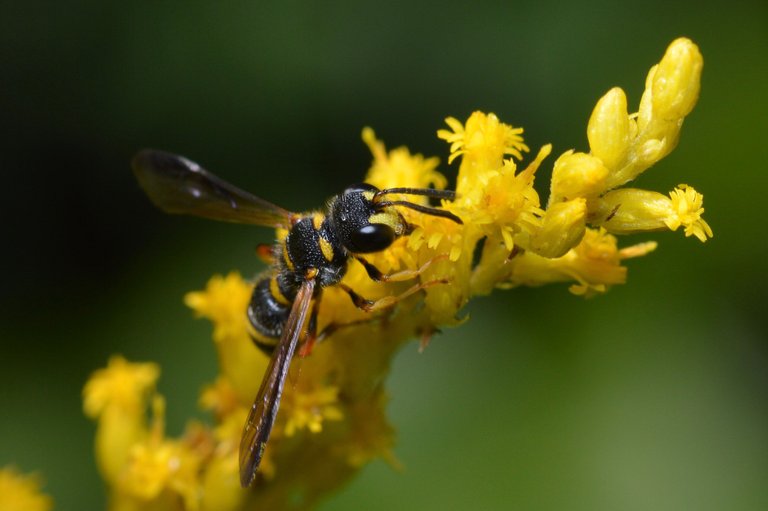
Additional identifying characteristics are the wing veins where the "outer veinlet of submarginal cell 3 meeting marginal cell not beyond its outer third." Which is hard to make out in the picture below...The genus Eucerceris has its third submarginal cell vein touch the tip of the marginal cell.
BugGuide.net has a good reference to demonstrate this here which I will modify and copy below:
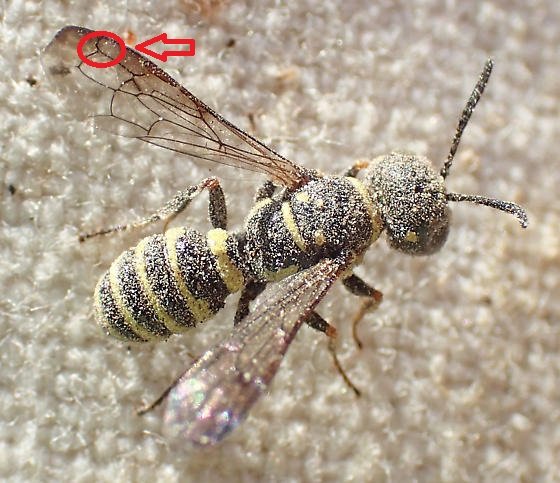
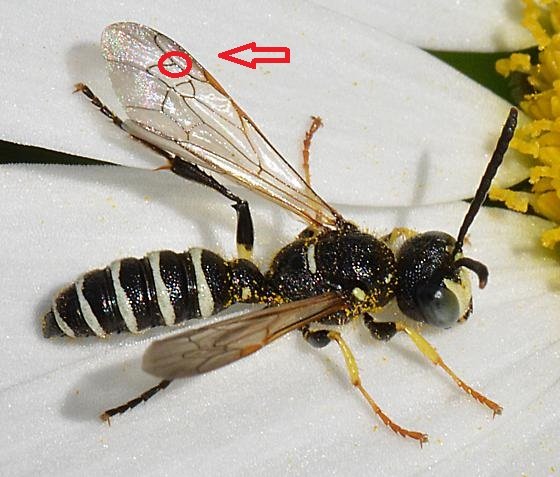
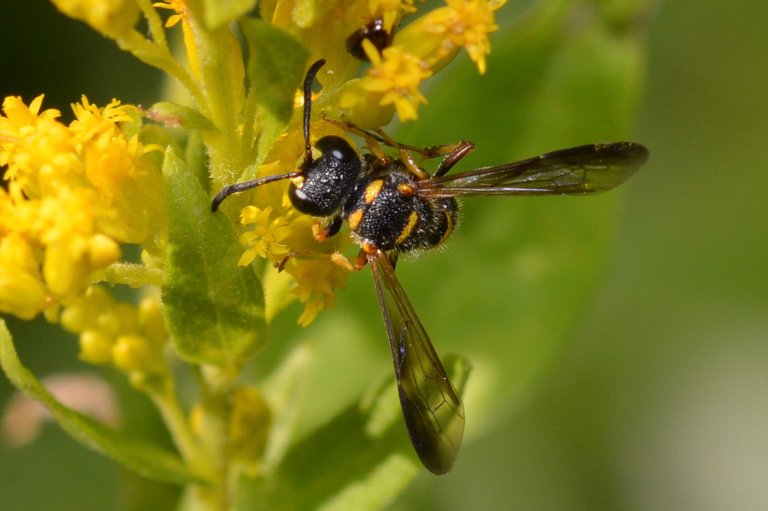
Once identified to the level of 'Weevil Wasp' the species of Cerceris insolita is distinguished by its unmarked 2nd tergum which is devoid of yellow markings. This is clearly visible in the pictures above giving us the correct species.
Wasps of the genus Cerceris nest solitarily though females are often found nesting near one another though that is presumed to be because of substrate availability constraints as well as local food abundance. They nest in bare but firm soil. The prefer to dig their own tunnels but can re-use one of a similar ground-nesting wasp. The average nest depth is 20cm but can vary widely, ranging up to over 1m in depth. Tunnels start vertically but then have cells branching off horizontally or the tunnel itself turns horizontal with depth. Tunnels average less than 10 cells.
After the tunnel is complete, females then start hunting for prey to provision the tunnel. Usually these consist of weevils (Curculionoidea) but certain Cerceris species are known to provision other beetles (Darkling Beetles, Jewel Beetles, Long-horned Beetles, etc.)
Adults feed on pollen and nectar. I find them on goldenrod but other species of Cerceris may prefer other flowering plants. Good to keep in mind when out looking for these amazing creatures.
All photos except those mentioned are my own.
Sources:
Review of the genus Cerceris in America north of Mexico
By Scullen H.A.
Proc. U.S.N.M. 116(3506): 333-548, 1965
https://www.biodiversitylibrary.org/page/7758219#page/389/mode/1up
BugGuide.net
https://bugguide.net/node/view/12521
I just used to say, that it was absolutely amazing. It's great to see so many perfect shots you show here
Thank you!
Wow beautiful macros. I like the yellow stripes on the abdomen of this insect. I once read that these insects have these bands for camouflage so their natural predators think it is a dangerous wasp and don't approach it. I loved reading your post!
Thank you.
Yes there could be some bio-mimicry here. A lot of wasps have this black and yellow patterning but not all of them. I guess it is an effective evolutionary strategy!
Yes, nature is amazing!
Thanks for your contribution to the STEMsocial community. Feel free to join us on discord to get to know the rest of us!
Please consider delegating to the @stemsocial account (85% of the curation rewards are returned).
You may also include @stemsocial as a beneficiary of the rewards of this post to get a stronger support.
Thank you for entering the contest.
Perfect information and nice photos. This is exactly the type of article that belongs in the contest :-)
Thank you, the information was very interesting to me, how you were describing the classification of that wasp.